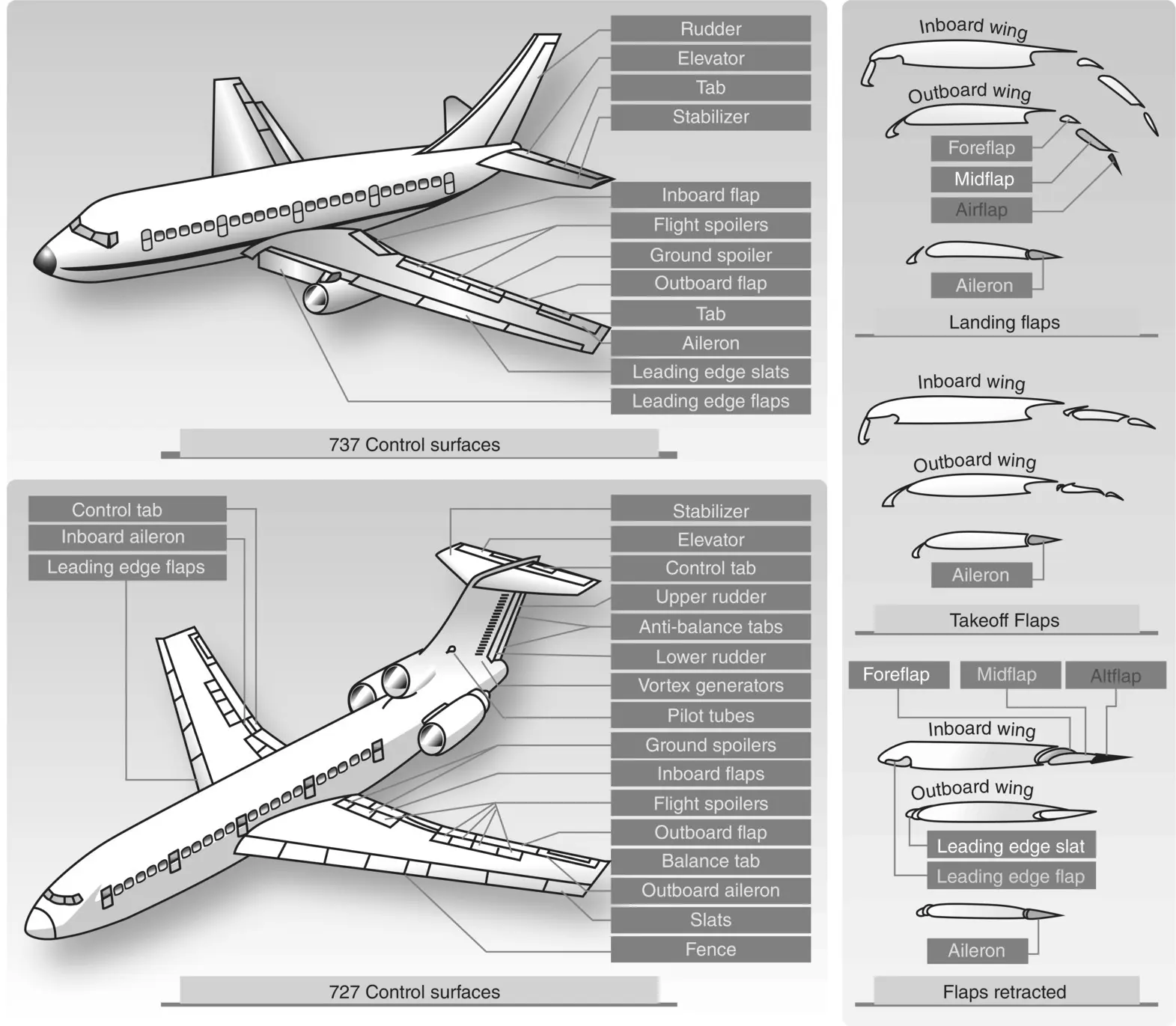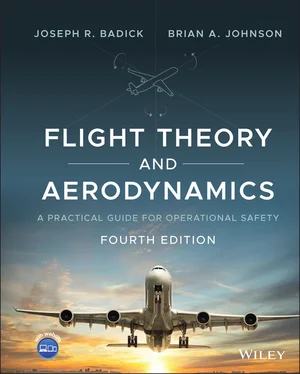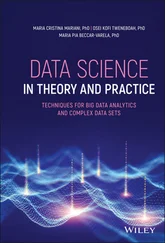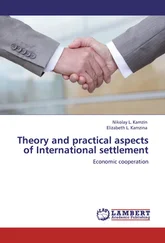Joseph R. Badick - Flight Theory and Aerodynamics
Здесь есть возможность читать онлайн «Joseph R. Badick - Flight Theory and Aerodynamics» — ознакомительный отрывок электронной книги совершенно бесплатно, а после прочтения отрывка купить полную версию. В некоторых случаях можно слушать аудио, скачать через торрент в формате fb2 и присутствует краткое содержание. Жанр: unrecognised, на английском языке. Описание произведения, (предисловие) а так же отзывы посетителей доступны на портале библиотеки ЛибКат.
- Название:Flight Theory and Aerodynamics
- Автор:
- Жанр:
- Год:неизвестен
- ISBN:нет данных
- Рейтинг книги:4 / 5. Голосов: 1
-
Избранное:Добавить в избранное
- Отзывы:
-
Ваша оценка:
- 80
- 1
- 2
- 3
- 4
- 5
Flight Theory and Aerodynamics: краткое содержание, описание и аннотация
Предлагаем к чтению аннотацию, описание, краткое содержание или предисловие (зависит от того, что написал сам автор книги «Flight Theory and Aerodynamics»). Если вы не нашли необходимую информацию о книге — напишите в комментариях, мы постараемся отыскать её.
AERODYNAMICS
GET A PILOT’S PERSPECTIVE ON FLIGHT AERODYNAMICS FROM THE MOST UP-TO-DATE EDITION OF A CLASSIC TEXT Flight Theory and Aerodynamics
Flight Theory and Aerodynamics
Flight Theory and Aerodynamics
Flight Theory and Aerodynamics — читать онлайн ознакомительный отрывок
Ниже представлен текст книги, разбитый по страницам. Система сохранения места последней прочитанной страницы, позволяет с удобством читать онлайн бесплатно книгу «Flight Theory and Aerodynamics», без необходимости каждый раз заново искать на чём Вы остановились. Поставьте закладку, и сможете в любой момент перейти на страницу, на которой закончили чтение.
Интервал:
Закладка:
Aerodynamic forces
Absolute altitude
Air data computer
Altimeter
Altitude
Airspeed indicator
Bernoulli’s equation
Calibrated airspeed
Compressibility
Continuity equation
Density
Density altitude (high/low)
Equivalent airspeed
Groundspeed
International Civil Aviation Organization (ICAO)
Indicated airspeed
Indicated altitude
Mean sea level (MSL)
Millibars
Pressure altitude
Stagnation point
Standard atmosphere
Static pressure
True airspeed
True altitude
Temperature (Fahrenheit/Celsius)
Venturi
Viscosity
PROBLEMS
1 An increase in static air pressureaffects air density by decreasing the density.does not affect air density.affects air density by increasing the density.
2 A decrease in temperatureaffects air density by decreasing the density.does not affect air density.affects air density by increasing the density.
3 Pressure ratio isambient pressure divided by sea level standard pressure measured in the same units.ambient pressure in millibars divided by 29.92.ambient pressure in pounds per square inch divided by 2116.sea level standard pressure in inches of mercury divided by 29.92.
4 Density ratio, σ (sigma) isequal to pressure ratio divided by temperature ratio.measured in slugs per cubic foot.equal to the ambient density divided by sea level standard pressure.None of the above.
5 According to Table 2.1, the value for the density ratio on a standard day at sea level is:0.861 71.01.50.002 377
6 Bernoulli’s equation for subsonic flow states thatif the velocity of an airstream within a tube is increased, the static pressure of the air increases.if the area of a tube decreases, the static pressure of the air increases.if the velocity of an airstream within a tube increases, the static pressure of the air decreases, but the sum of the static pressure and the velocity remains constant.None of the above.
7 Dynamic pressure of an airstream isdirectly proportional to the square of the velocity.directly proportional to the air density.Neither (a) nor (b).Both (a) and (b).
8 In this book, we use the formula for dynamic pressure, , rather than the more conventional formula, , becauseV in our formula is measured in kts.density ratio is easier to handle (mathematically) than the actual density (slugs per cubic foot).Both (a) and (b).Neither (a) nor (b).
9 True altitude equals indicated altitude:below flight level 180.during standard conditions.when the altimeter is set to 29.92”.only when the temperature is standard regardless of pressure.
10 Which of the following determines the vertical altitude above the ground:pressure altitude.indicated altitude.true altitude.absolute altitude.
11 The corrections that must be made to indicated airspeed (IAS) to obtain calibrated airspeed (CAS) areposition error and compressibility error.instrument error and position error.instrument error and density error.position error and density error.
12 The correction that must be made to CAS to obtain equivalent airspeed (EAS) is called compressibility error, whichis always a negative value.can be ignored at high altitude.can be ignored at high airspeed.can be either a positive or a negative value.
13 The correction from EAS to true airspeed (TAS) is dependent ontemperature ratio alone.density ratio alone.pressure ratio alone.None of the above.
14 Groundspeed equals ______ when zero wind at altitude.equivalent airspeed.indicated airspeed.true airspeed.calibrated airspeed.
15 An airplane is operating from an airfield that has a barometric pressure of 27.82″ Hg and a runway temperature of 100 °F. Calculate (or find in Table 2.1) the following:Pressure ratio.Pressure altitude.Temperature ratio.Density ratio.Density altitude.
16 Fill in the values below for the stations in the drawing.At station 1At station 2At station 3A1 = 10 ft2A2 = 5 ft2V3 = 80 kts.V1 = 100 kts.V2 = ?A3 = ?P1 = 2030 psfP2 = ?P3 = ?σ = 0.968H = ?q2 = ?q3 = ?
17 Using Table 2.1, calculate the dynamic pressure, q at 5000 ft density altitude and 200 kts. TAS.
18 The airspeed indicator of an airplane reads 355 kts. There are no instrument or position errors. If the airplane is flying at a pressure altitude of 25 000 ft, find the equivalent airspeed (EAS).
19 Find the true airspeed (TAS) of the airplane in Problem 18 if the outside air temperature is −40 °C.
20 Using the TAS from the previous example, when a = 594.5 kts., calculate the Mach number for the aircraft.
3 Structures, Airfoils, and Aerodynamic Forces
CHAPTER OBJECTIVES
After completing this chapter, you should be able to:
Identify and provide examples of primary and secondary flight controls and their purpose on an aircraft.
Describe the importance of an airfoil and summarize airfoil terminology.
Identify the variables in the geometry of an airfoil and how airfoils are classified.
Characterize the development of forces on airfoils and the relationship to Bernoulli’s principle.
Determine the relationship between aerodynamic force and the center of pressure.
Compare and contrast the development of pitching moments on a symmetrical airfoil and a cambered airfoil.
Define aerodynamic center and how it changes with aircraft speed.
Review an aircraft accident summary and correlate to the importance of primary and secondary flight controls for safety of flight.
AIRCRAFT STRUCTURES
Up to this point, you may have considered the wing to be the only aerodynamically important structure of an aircraft. But in fact the entire structure of the airplane plays a role in the efficiency of an aircraft in flight, and identifying how, and to what extent, each part of an airplane structure plays a role is an important first step. We will begin with a review of the more prominent structures discussed in aerodynamics, because their direct role on lift and drag provides the foundation for more complicated discussions in the future.
Flight control systems are of two types: primary and secondary. Primary control systems on fixed‐wing aircraft include the ailerons, elevator (stabilator), and rudder and, depending on the aircraft type and aircraft speed, give the pilot a “feel” of how the aircraft is performing. Secondary systems such as trim systems, flaps, spoilers, and leading edge devices are used in relieving control pressures for the pilots, assisting primary control surfaces in high‐speed flight, or improving the performance characteristics of the aircraft in general.

Figure 3.1 Modern transport category control surfaces.
Source : U.S. Department of Transportation Federal Aviation Administration (2008a).
Airplanes are flown in various configurations of gear and flaps, but for this textbook we will commonly refer to clean and dirty as the two reference configurations. In a clean configuration, the gear is retracted (when applicable), and the flaps and other high‐lift devices are retracted. In the dirty configuration, the gear is considered down and locked, and the high‐lift devices are fully deployed.
Figure 3.1shows example of airfoils found on many air transport aircraft category still in use today. Figure 3.2details the flight control system of a helicopter, incorporating anti‐torque pedals, a cyclic, and a collective. An expanded discussion of these primary flight controls can be found in Chapter 15.
Primary Flight Controls
Ailerons
Интервал:
Закладка:
Похожие книги на «Flight Theory and Aerodynamics»
Представляем Вашему вниманию похожие книги на «Flight Theory and Aerodynamics» списком для выбора. Мы отобрали схожую по названию и смыслу литературу в надежде предоставить читателям больше вариантов отыскать новые, интересные, ещё непрочитанные произведения.
Обсуждение, отзывы о книге «Flight Theory and Aerodynamics» и просто собственные мнения читателей. Оставьте ваши комментарии, напишите, что Вы думаете о произведении, его смысле или главных героях. Укажите что конкретно понравилось, а что нет, и почему Вы так считаете.












